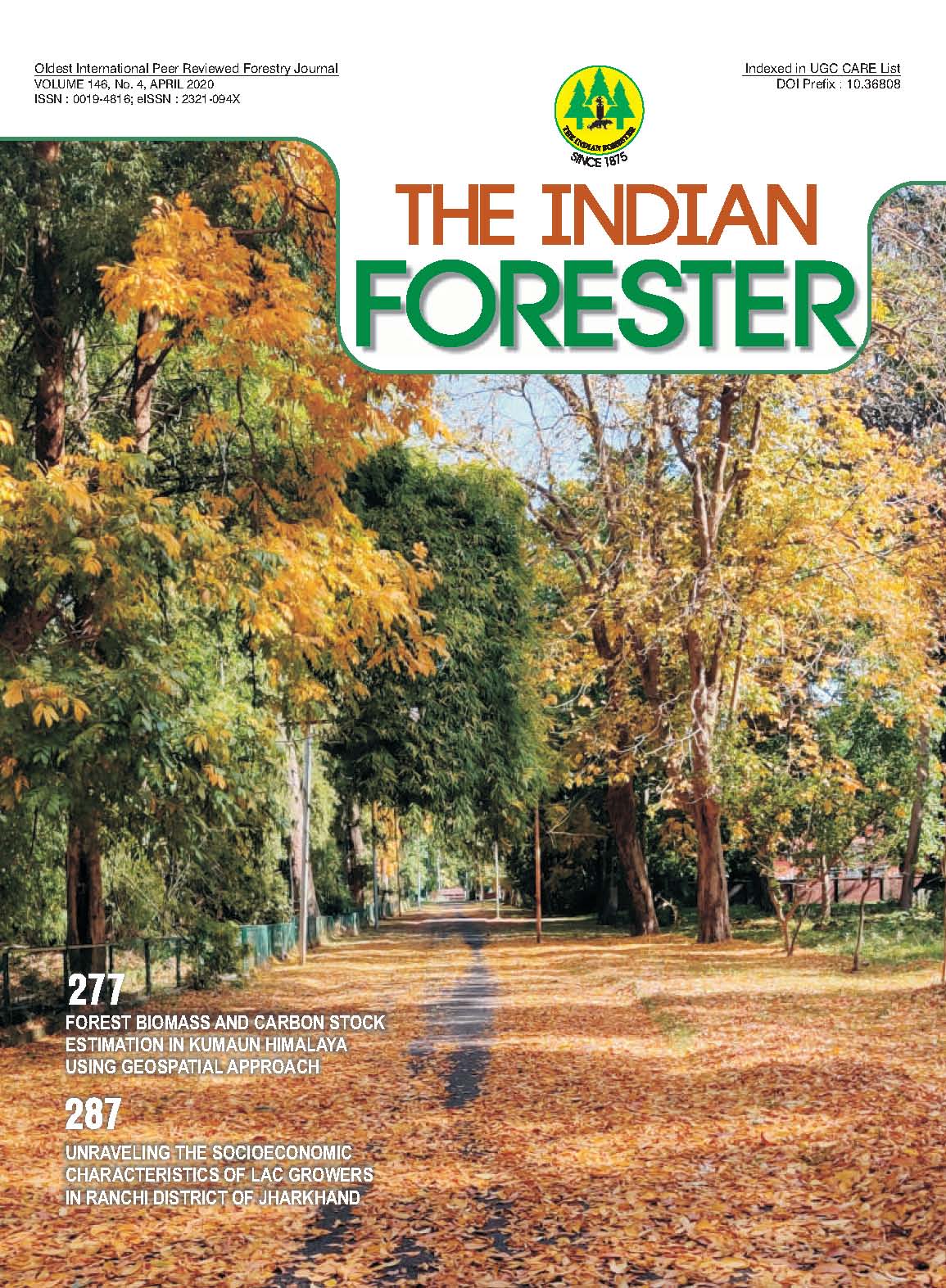Potential of NTFPs in Income and Employment Generation for Tribals of Polo Forest, Sabarkantha, Gujarat
DOI:
https://doi.org/10.36808/if/2020/v146i4/146284Keywords:
Non-Timber Forest Products (NTFPS), Polo Forests, Tribal Economy, Income.Abstract
The present survey is the most elaborate comprised study on Non-Timber Forest Products (NTFPs) collection along with its economic contribution to the tribal economy of Polo forests. In the study, a total of 31 villages of Polo forests have been sampled to calculate a total collection of NTFPs. During the study, 10% households of the total households from each village were interviewed with the help of a predesigned questionnaire. The primary level survey revealed that NTFPs played a remarkable role in the tribals economy of Polo forests from the contribution of a total of 57 NTFPs which are being collected from 8 different parts of 48 plant species products and 2 animal products. These NTFPs have generated an income oft 12.74 million/annum of which maximum part comes from nonrecorded trades. The current estimation of income generation revealed that maximum economic contribution was found to be in Mahuwa (29%) followed by Timru (25%), Puvad (7%) and Salai Guggal (6%). The study also revealed that in Polo forests, Kathodi community is the most forestdependent community that collects almost all types of NTFPs available during the year. The current study concluded the role of NTFPs in the tribal economy and various factors affecting the collection and trade.References
Chinmayi T.S. and Halbe A. (2019). Whose 'right' is it in the Sundarbans? Retrieved June 8, 2019, from
https://researchmatters.in/news/whose-%E2%80%98right%E2%80%99-it-sundarbans.
Desarkar B.K. (1963). A Note on Bidi Leaf (Diospyros Melanoxylon), Indian Forester, 89(1): 39-45.
GOI (2011). Census of India 2011. New Delhi, India: Registrar General and Census Commissioner of India, Ministry of Home Affairs.
Kamboj R.D., PathakB.J., Rajpurohit S., Yadav R, Mewada K., Pandya I. and Patel D. (2017). Final Report-Ecological Significance of Forests and Economic Dependence on it in the Vadodara Forest Circle of Gujarat. GEER Foundation, Gandhinagar, Gujarat 189+XII pp.
Kumar V. (2015). Impact of Non Timber Forest Produces (NTFPs) on food and livelihood security: An economic study of tribal economy in Dang's district of Gujarat, India. International journal of Agriculture, Environment and Biotechnology, 2(8):387.
Madhu Sarin, Oliver Springate-Baginski (2010). India's Forest Rights Act - the anatomy of a necessary but not sufficient institutional reform. Manchester: IPPG. Retrieved April 17. 2019, from IPPG Website: http://www.ippg.org.uk/papers/dp45.pdf.
Singh A. P. (2003). Working Plan for the Forests of Sabarkantha (North) Division & Sabarkantha (South) Division (l&ll). Gujarat Forest Department, Gandhinagar, Gujarat, India, 1-194 pp.
Tewari D. (1998). Income and Employment Generation Opportunities and Potential of Non-Timber Forest Products (NTFPs) A case study of Gujarat, Journal of Sustainable forestry 2(8), 55-76.
Tripathi S. (2016). Customs, Traditions, NTFP Collection. Marketing and Key Issues of Garasia Tribes of Abu Road Block In Rajasthan, India. International Journal of Innovative Research and Advanced Studies (IJIRAS), 3(8): 118pp.
Tripathi S.S. (2016). Customs, Traditions, NTFP Collection. Marketing and Key Issues of Garasia Tribes of Abu Road Block In Rajasthan, India. International Journal of Innovative Research and Advanced Studies (IJIRAS), 3(8): 113-119.
Yadav R, Mewada K., Rajpurohit S. and Kamboj R.D. (2018). Non-Wood Forest Products Collection and its Economic Valuation in Godhra Forest division of Gujarat, India, Indian Forester, 4(144): 330-335.
Yadav R, Mewada K., Rajpurohit S. and Kamboj R.D. (2019). Non-wood Forest Products Collection and their valuation in Chhotaudepur Forest Division of Gujarat State, India, Indian Forester, 1(145): 56-61.
Downloads
Downloads
Published
How to Cite
Issue
Section
License
Unless otherwise stated, copyright or similar rights in all materials presented on the site, including graphical images, are owned by Indian Forester.





